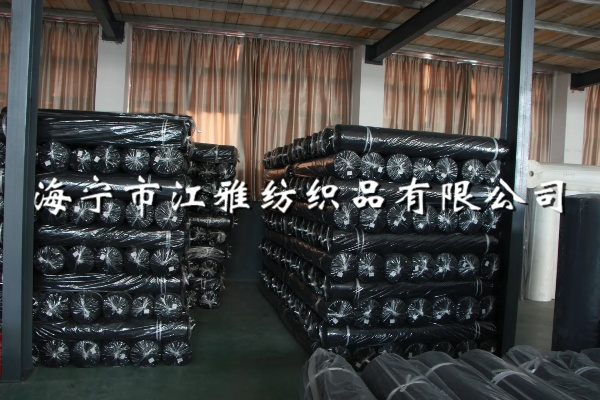Strategies for Reducing Costs in Textile Enterprises
Reducing costs in textile enterprises is crucial for their long-term success and profitability. Here are some strategies that can be implemented to achieve this goal:,1. Improve efficiency: One of the most effective ways to reduce costs is by improving production efficiency. This can be achieved through the use of advanced technology, such as automation and robotics, which can increase output while reducing labor costs.,2. Utilize lean management principles: Lean management principles can help textile enterprises streamline their operations and reduce waste. By focusing on continuous improvement and eliminating non-value-added processes, businesses can save money and improve overall performance.,3. Optimize inventory management: Proper inventory management can help textile enterprises avoid overstocking or understocking, which can lead to wasted resources and increased costs. By using appropriate forecasting models and implementing effective inventory control systems, businesses can ensure that they have the right amount of inventory at all times.,4. Implement cost-cutting measures: Companies can also implement cost-cutting measures, such as reducing energy consumption, minimizing transportation costs, and adopting more eco-friendly materials. These measures can help businesses save money while also reducing their environmental impact.
Introduction: In the competitive textile industry, cost control is a crucial factor in achieving profitability and staying ahead of competitors. Implementing effective strategies to reduce costs can significantly enhance a company's bottom line while also contributing to its sustainability goals. In this guide, we will explore various methods that textile enterprises can adopt to streamline their operations and minimize expenses.
-
Optimizing Production Processes
- Batch Production vs. Continuous Processing: Choosing between batch production and continuous processing based on product demand. Batch production allows for more flexibility but may lead to higher setup costs; whereas, continuous processing can be faster but requires more capital investment.
- Lean Manufacturing Practices: Employing principles such as Just-In-Time (JIT) inventory management, zero waste, and Six Sigma to minimize waste and increase efficiency.
- Automation and Technology Adoption: Investing in automation equipment and software to reduce labor costs and improve quality control. For example, integrating AI-powered predictive maintenance tools to prolong machinery lifespan.
-
Supply Chain Management

- Procurement Strategies: Negotiating with suppliers for bulk orders or long-term contracts to secure better pricing and terms. Also, considering alternative raw materials to reduce dependence on specific suppliers.
- Logistics Efficiency: Streamlining transportation methods like using dedicated freight lanes or partnering with carriers that offer cost-effective solutions.
- Warehousing Optimization: Relocating warehouses closer to markets to reduce shipping costs and improve delivery times.
-
Cost Control in Operations
- Material Management: Implementing a comprehensive material tracking system to ensure accurate usage and minimize overstocking or understocking.
- Labor Efficiency: Training employees in time-and-motion studies to optimize workflows and identify areas for improvement.
- Utilization of Energy: Providing incentives for energy-efficient practices, such as LED lighting, water-saving fixtures, and renewable energy sources.
-
Research and Development (R&D)
- Investment in Research: Conducting regular R&D programs to identify new materials, processes, or design innovations that can reduce costs without compromising quality.
- Technology Transfer: Collaborating with universities or research institutions to accelerate the commercialization of innovative technologies.
-
Marketing and Sales
- Pricing Strategies: Analyzing market trends and competitor pricing to adjust prices accordingly while maintaining profit margins.
- Customer Relationship Management (CRM): Building strong relationships with customers through personalized services and loyalty programs to retain business and drive repeat purchases.
-
Financial Management
- Risk Assessment: Identifying potential risks and developing contingency plans to mitigate them before they become significant issues.
- Accounting Standards: Ensuring compliance with international accounting standards to minimize tax liabilities and legal risks.
-
Employee Retention and Development
- Competitive Benefits: Offering competitive salaries, benefits, and opportunities for professional development to retain top talent.
- Work-Life Balance: Encouraging work-life balance by offering flexible schedules, remote work options, and other perks that appeal to modern workers.
-
Sustainable Practices
- Environmental Responsibility: Integrating sustainable practices into the business model, such as reducing water and energy consumption, minimizing waste, and using eco-friendly materials.
- Social Responsibility: Partnering with local communities to support local businesses and contribute to community development initiatives.
Case Study: One textile enterprise that successfully reduced costs is Zara, an international fast fashion brand. Zara adopts a lean supply chain approach by collaborating directly with suppliers, implementing advanced forecasting systems, and leveraging digital platforms for inventory management. The company also invests in technology to streamline its logistics network and optimize its supply chain. Additionally, Zara focuses on employee training and retention, ensuring high levels of productivity and motivation among its workforce. By implementing these strategies, Zara has been able to maintain its competitive edge while reducing costs and improving operational efficiency.
Conclusion: Reducing costs in textile enterprises is essential for long-term success. By adopting a combination of strategies, such as optimizing production processes, managing supply chain efficiency, controlling operational costs, investing in R&D, marketing, financial management, employee development, and adopting sustainable practices, textile companies can achieve cost savings while maintaining quality and delivering value to their customers. As Zara demonstrates, by focusing on these key areas, textile enterprises can not only reduce costs but also enhance their competitiveness and sustainability.
随着市场竞争的日益激烈,纺织品企业如何在降低成本方面取得成功,成为了一个重要的议题,本文将探讨纺织品企业降低成本的一些有效策略和方法。
降低成本的关键因素
- 采购策略优化:通过比价采购、集中采购等方式,降低原材料成本。
- 生产效率提升:采用先进的生产技术和管理方法,提高生产效率。
- 节能减排:采用环保材料和节能设备,降低能源消耗和环境污染。
- 成本控制意识培养:加强成本控制培训,提高员工对成本控制的重视度。
具体降低成本措施
采购策略优化案例分析
某纺织品企业通过与供应商建立长期合作关系,采用集中采购方式,降低了原材料采购成本,通过优化采购流程,提高了采购效率,降低了采购成本。
采购策略优化案例表
| 策略名称 | 实施效果 | 具体措施 | 成本降低情况 |
|---|---|---|---|
| 建立长期合作关系 | 降低采购成本 | 与多家供应商建立合作关系,集中采购原材料 | 显著降低原材料采购成本 |
| 优化采购流程 | 提高采购效率 | 对采购流程进行优化,减少中间环节,提高采购效率 | 降低采购成本的同时,提高了响应速度 |
| 成本控制意识培养 | 加强成本控制培训 | 对员工进行成本控制培训,提高成本控制意识 | 培养全员成本控制文化 |
生产效率提升案例分析
某纺织品企业通过引入自动化生产线和智能设备,提高了生产效率,自动化生产线可以减少人工操作错误,提高生产稳定性,智能设备可以自动完成一些重复性工作,降低了人工成本。
生产效率提升案例表
| 策略名称 | 实施效果 | 设备类型及数量 | 生产效率提升情况 |
|---|---|---|---|
| 引入自动化生产线和智能设备 | 提高生产效率 | 高效率生产线和智能设备组合 | 生产稳定性提高,生产效率大幅提升 |
| 优化生产流程 | 提高生产效率和质量稳定性 | 对生产流程进行优化和改进,减少生产浪费和缺陷率 | 提高产品质量和客户满意度 |
节能减排案例分析
某纺织品企业通过采用环保材料和节能设备,实现了节能减排的目标,该企业采用了低能耗染料和环保型织物处理技术,同时安装了节能设备,如高效节能电机和热回收装置等,这些措施有效地降低了能源消耗和环境污染。
节能减排案例表
| 策略名称 | 实施效果 | 主要措施 | 环境效益分析 |
|---|---|---|---|
| 采用环保材料和节能设备 | 实现节能减排目标 | 低能耗染料、环保型织物处理技术、节能设备组合 | 有效降低能源消耗和环境污染,符合环保要求 |
| 绿色生产宣传推广 | 提高员工环保意识 | 对员工进行环保宣传教育,提高环保意识 | 培养全员环保意识,促进可持续发展 |
降低成本的具体实践案例分析
XX纺织品企业案例分析:该企业在降低成本方面采取了多种措施,通过优化采购策略,降低了原材料成本,通过引入自动化生产线和智能设备,提高了生产效率和质量稳定性,通过加强成本控制培训,提高了员工对成本控制的重视度,这些措施的实施取得了显著的成本效益,通过引入自动化生产线减少了人工成本,提高了产品质量和客户满意度;通过加强成本控制培训提高了员工对成本控制的敏感度,从而更好地控制成本,这些实践案例表明,降低成本需要从多个方面入手,包括采购策略优化、生产效率提升、节能减排等方面,只有全面考虑并采取有效的措施,才能实现降低成本的目标。
纺织品企业在降低成本方面需要综合考虑多个因素,采取多种措施,通过优化采购策略、提高生产效率、采用环保材料和节能设备等措施,可以有效降低生产成本,提高竞争力,加强成本控制培训也是实现降低成本的重要手段之一,在实施这些措施时,需要注重全员参与和持续改进,不断优化成本控制策略和方法,才能实现纺织品企业的可持续发展和盈利目标。
Articles related to the knowledge points of this article:
Understanding the Significance of Testing for Formaldehyde in Textiles
The Dynamics of Jinwang Textiles:A Global Fabrication and Market Leader
Breaking Barriers and Unleashing Potential at the Frankfurt Textile Expo
Unraveling the Art of Fabric:A Deep Dive into the World of Quán HéTextiles



